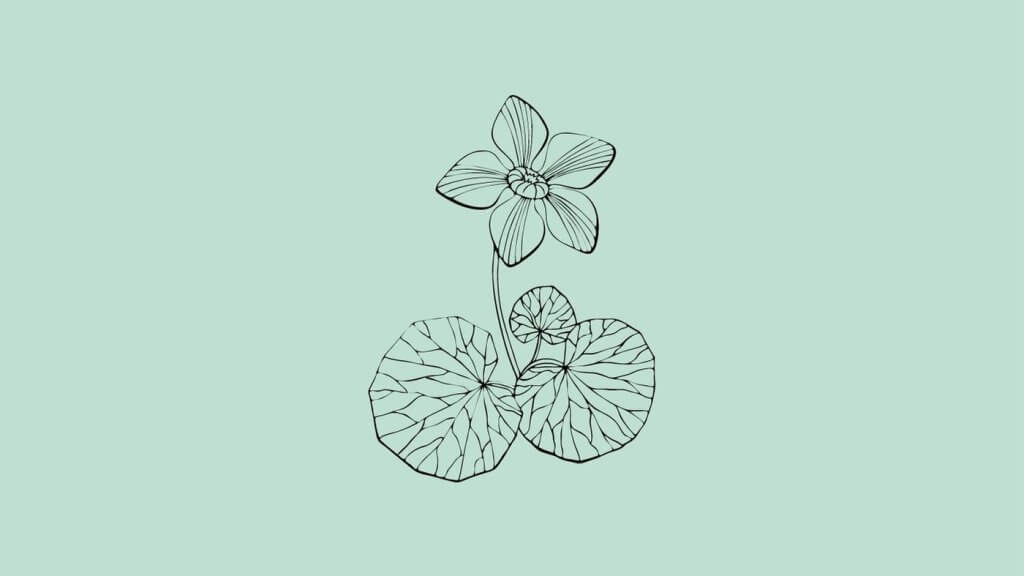Marsh marigold (Caltha palustris) is a herbaceous perennial native to Europe, northern Asia, northern and coastal US, and Canada. It has enormous king-cup-like yellow flowers. Marsh marigold should never be eaten raw; it's harmful to pets, horses, livestock, and humans.
Remember looking at mash marigold’s large, golden flowers and thinking they look like the cups of kings?
Well, that’s where the name ‘kingcup’ comes from. But there’s more to the bright yellow flowers than just what they look like.
Marsh Marigold: Plant Profile
Marsh marigolds aren’t only known by the name kingcup. They also take their name from the Latin name, Caltha, which comes from the Greek for ‘goblet.’ But you may know this wildflower’s scientific plant name, Caltha palustris.
What Are You Foraging For Right Now?
We're thrilled to hear your ideas. What would you like to submit today? Feel free to share your thoughts and experiences with us.
Caltha belongs to the genus of rhizomatous perennial flowering plants that are part of the Ranunculaceae family, otherwise known as the “buttercup family.” Ten species have been assigned to this genus/family, one of which is the Caltha palustris.
This form of herbaceous perennial actually comes with many names.
Other common names include:
- Bouton d’or
- Bull’s eyes
- Caléndula acuática
- Calta palustre
- Caltha alba
- Cowslip
- Horse blobs
- Leopard’s foot
- Meadow routs
- Populage des marais
- Water blobs
- Water dragon
As a continuous spring flower, it’s a firm favorite among foragers. This has been a popular plant for ages, as one of the most ancient sturdy wildflowers thought to have been here before the last Ice Age.
Marsh marigolds, among other flowers, are some of the first wildflowers of spring. With a bloom time from early spring, i.e., May to August, the window for foragers is wide open.

Are Marsh Marigolds the Same as Buttercups?
The marsh marigold is a large yellow flower, an abundant, fruitful version of its smaller cousin, the buttercup. It sports dark shiny leaves and yellow flowers, similar to the buttercup.
Being a member of the buttercup family, it’s no surprise that these yellow flowers go by the name buttercup.
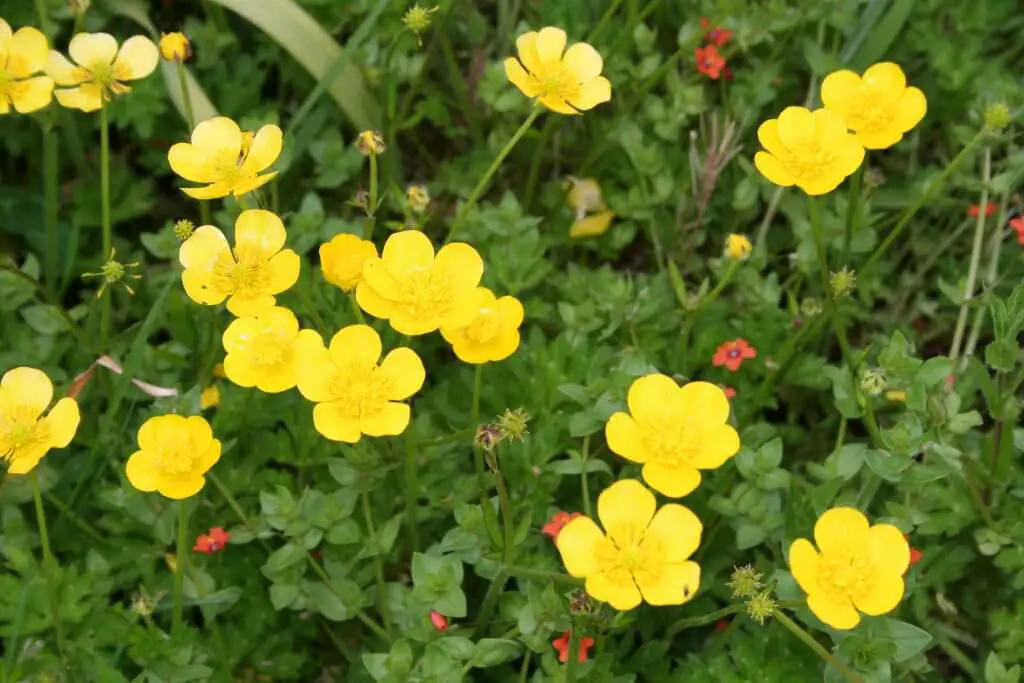
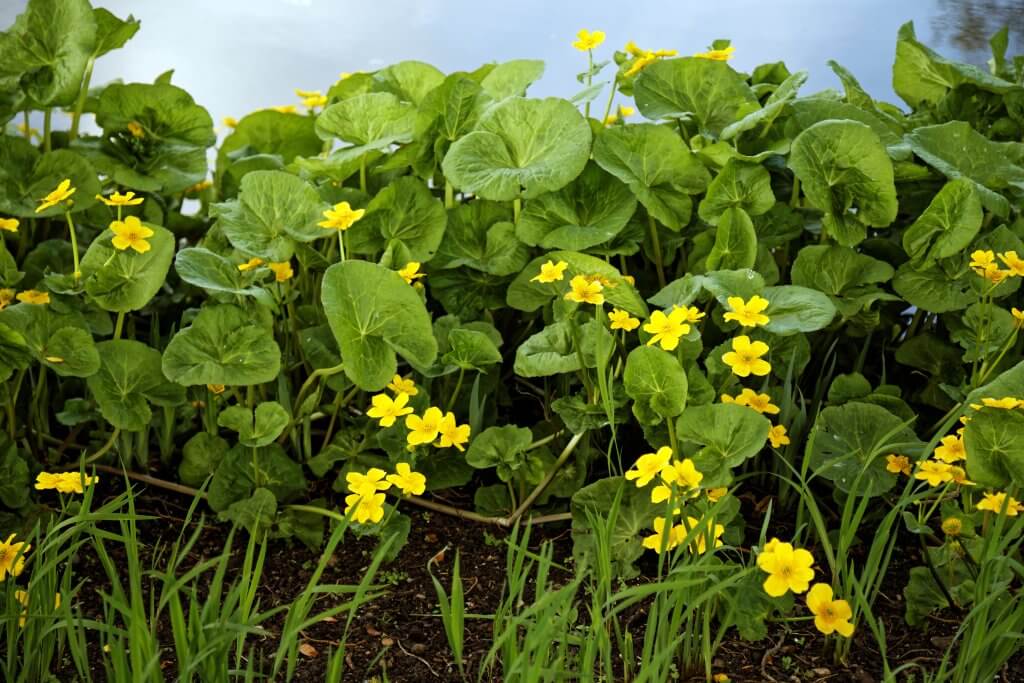
Where does Marsh Marigold Grow?
Marsh marigold is a common native plant species to Europe, including the UK, northern Asia, much of the northern and coastal US, and Canada.
It has been locally threatened by agricultural improvement and the drainage of its wet grassland habitat.
Fear not; you’ll often find it abundant in standing water, wet soil, and wetlands. These areas include;
- Ponds
- Marshes
- Rain gardens
- Ditches
- Wet woodlands
- Wet meadows
There’s no surprise the kingcup is a foragers’ favorite, as this boisterous flower is easy to spot.
It has huge, king-cup-like yellow flowers drawing the attention of foragers and hikers alike.
How do you Identify a marsh marigold?
The problem is that the marsh marigold is much less frequent these days, so pinpointing it can be challenging for foragers.
Unfortunately, humans have dramatically altered the landscape, destroying the yellows flower’s preferred habitat, the wetland.
But, if you can learn to identify marsh marigold, you’re halfway to learning how to forage, grow, and use it, including as food and medicine.
- You can’t miss the sizeable yellow buttercup-style flowers, usually 0.6–2 in. wide.
- Contrary to popular belief, the marsh marigold has no true petals. Like many of the buttercup family, it boasts five to eight petal-like sepals.
- When the flower blossoms, they open to reveal a mass of yellow stamens surrounding the fused pistil.
- Look out for large, kidney-shaped leaves which are hairless, glossy, and green, with crenated margins. You’ll also notice how the leaves are paler on the undersides.
- If you’re still not sure if you’re looking at the marsh marigold, check the basal leaves, which have white-ish netted veins, plus minor, white hydathodes at the tips.
- The leaves range in size from 3”-7”. Looking at the leaves is essential for identifying marsh marigolds, as they will be unlike the other plants that share their habitat.
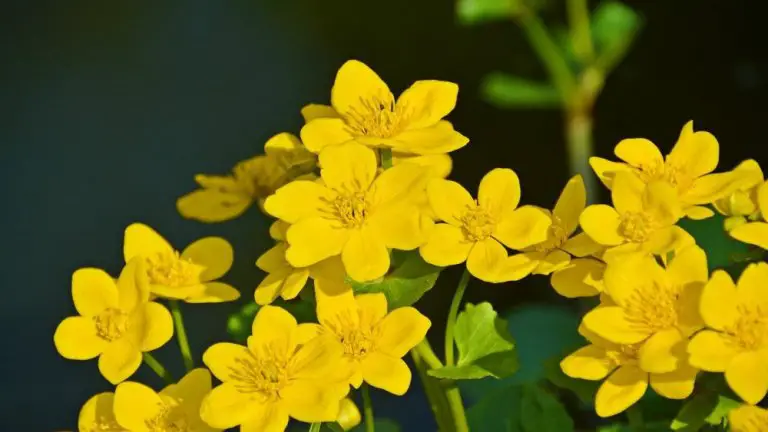
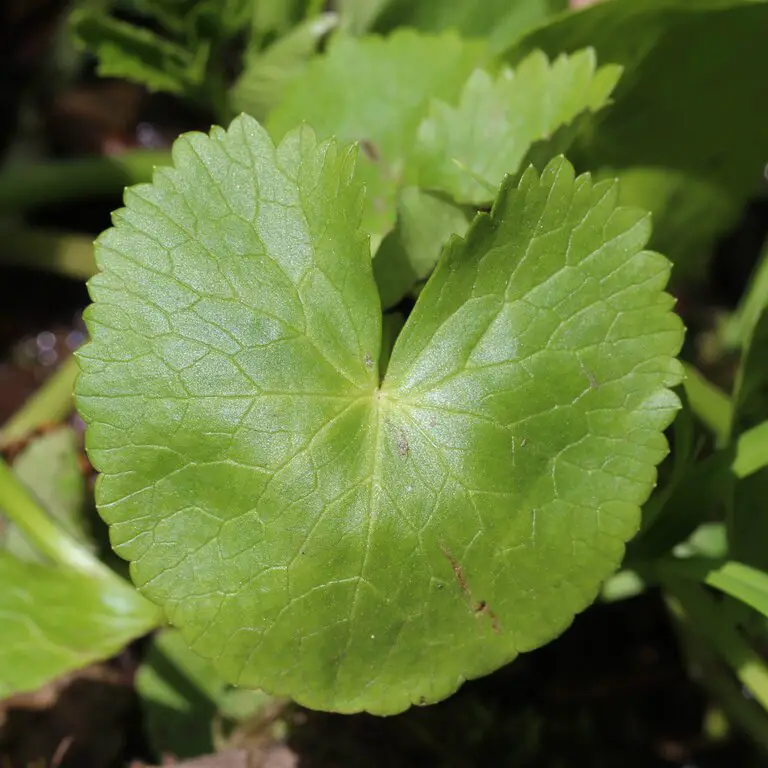
Is Marsh Marigold Toxic?
You absolutely should never, under any circumstances, eat raw marsh marigold or let pets eat it. It’s harmful to pets, horses, livestock, and humans.
This poison comes from the presence of protoanemonin, which is an oily toxin found in all plants belonging to the Ranunculaceae family.
When this plant is damaged, it can release this toxin, causing skin irritation. Convulsions and lesions throughout the digestive tract are also possible after consumption.
Can you Eat Marsh Marigolds?
Although raw Caltha palustris should never be eaten, many people make tea from cooked or pickled flowers, mainly because of their medicinal purposes. It’s commonly cooked as a pot-herb, which people enjoy after a long winter of tinned food.
If you plan to cook marsh marigold, it’s most enjoyable when young and tender. You can harvest the small leaves to use as a cooked green. You can also eat the leaf stalks and young, unopened flower buds, but never when raw.
What is Marsh Marigold Good for?
Marsh marigold is helpful for wildlife-friendly ponds as they provide early nectar for insects and shelter for frogs.
As mentioned, people commonly use the flowering of marsh marigold that grows above ground for its potential medicinal purposes.
Some of the ailments people believe it aids include:
- Pain
- Fluid retention
- High cholesterol
- Low blood sugar
- Constipation
- Cramps
- Menstrual disorders
- Yellowed skin (jaundice)
- Swollen airways (bronchitis)
It’s also not uncommon for people to apply marsh marigold onto their skin to clean wounds and sores.
However, there isn’t any reliable information or evidence to say whether marsh marigold works or how it works as a medicine.
How to Grow and Care for Marsh Marigolds
- Caltha palustris has basic but precise needs. It prefers an open site with plenty of space and rich, boggy soil at the water’s edge.
- For the marsh marigold to thrive, it requires full sun. But luckily, this is quite a hardy plant and can also handle part shade.
- Just ensure they’re in a position to receive six hours of sunlight daily and access plenty of water. If so, they should thrive.
- If you live somewhere pretty hot, provide plenty of shade and water so they don’t go into a dormant state during the peak of summer. They definitely won’t be ready yet.
Getting into the great, wet outdoors in search of edible plants, herbs, fruits and fungi is one of Sarah’s favorite outdoor pursuits. She thinks there’s nothing better than combining her passion for hiking with the start of the foraging season. Sarah’s definitely not afraid of a little rain and dirt, it’s all part of the fun.

